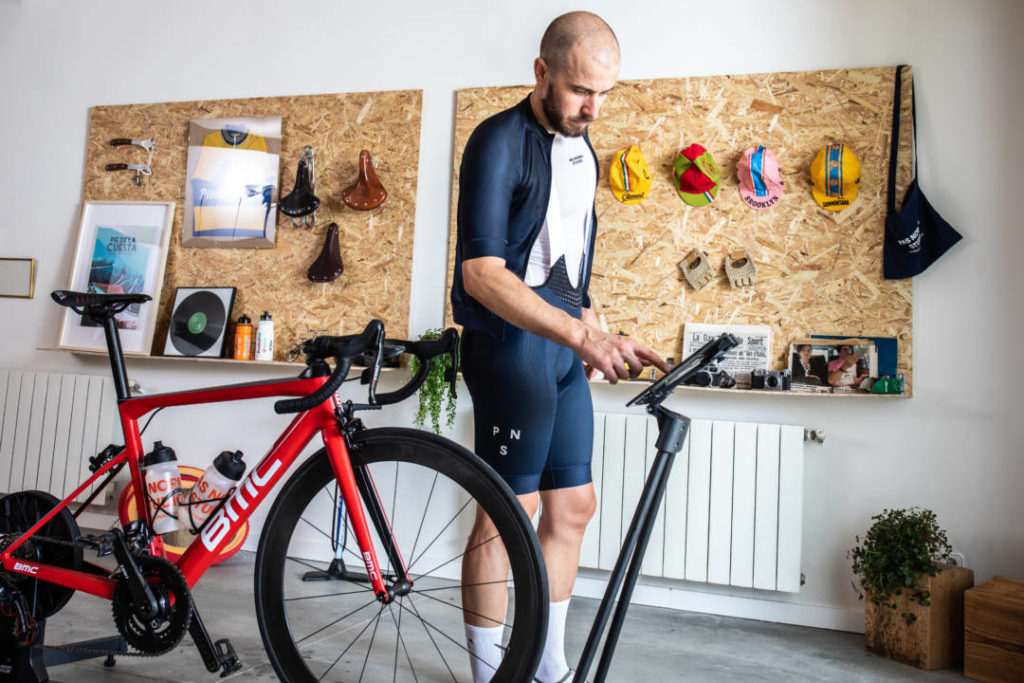Perhaps the three terms that appear in the headline are the three fundamental factors for an athlete to be able to succeed. Endurance, to last longer than anyone else and give a similar performance throughout the entire event; Speed, to be able to give a rhythm that leaves your rivals behind; Strength, a factor that gives you the necessary energy. At BKOOL, we believe that it is essential to balance your training in order to improve in these three areas and have that extra boost.
What is integrated training?
Integral training in cycling is an art and a science, where the balance between endurance, speed and strength becomes the pillar to achieve optimal performance. This article focuses on providing a detailed guide for cyclists and coaches looking to improve in these areas, while maintaining a practical and technical perspective.
To begin with, it is essential to understand the basic principles of sports training. These principles, such as specificity, progression and recovery, are fundamental to any successful training programme. Specificity involves training in a way that reflects the specific demands of cycling, while progression refers to gradually increasing the intensity of training to improve. Finally, recovery is crucial to avoid overtraining and injury.
Understanding the three factors
Endurance is a key component of cycling. It refers to the ability to sustain physical effort over a prolonged period. Improving endurance involves not only long hours on the bike, but also specific techniques such as threshold training, where you work just below the level at which lactic acid begins to build up in the muscles.
Speed, although often associated with short sprints, is vital at all stages of cycling. Working on speed means improving the ability to perform fast, intense efforts, which is essential for situations such as race attacks or sprint finishes. Exercises such as high intensity intervals are excellent for developing speed.
Strength is another fundamental element in cycling. It is not only about the ability to pedal harder, but also about improving efficiency and resistance to fatigue. Strength training can include gym work with weights as well as on-bike exercises, such as pedalling uphill or sprinting in a heavier gear.

How to combine endurance, speed and strength
The real challenge is to combine endurance, speed and strength training effectively. This requires careful planning and a periodised approach to training, where different phases focus on different aspects, allowing the body to adapt and gradually improve in all areas.
Effective training planning is crucial. Periodisation, which divides the training year into phases with specific objectives, helps cyclists develop endurance, speed and strength in a systematic way. Each phase should have a clear focus, whether it is building a solid endurance base, improving strength or fine-tuning speed.
Knowing how to combine these factors, injury prevention and avoiding overtraining are key aspects of a well-balanced training programme. This includes following proper techniques, ensuring sufficient recovery time and listening to the body. Proper nutrition and hydration also play an important role.
Nutrition and recovery in combined training
Nutrition and recovery are as important as the training itself. A balanced diet rich in carbohydrates, protein and healthy fats, along with adequate hydration, is essential to maintain energy and facilitate recovery. Recovery techniques such as active rest, massage and adequate sleep should not be underestimated.
Case studies and examples of routines
To illustrate how this training approach can be applied, several case studies and examples of training balance routines are presented. These examples demonstrate how cyclists can structure their weekly training to include endurance, speed and strength sessions to suit their specific needs and goals. We will explain what this type of training would look like:
Example 1: weekly routine for intermediate cyclists
- Monday: Active rest with light walking or yoga, focusing on recovery.
- Tuesday: Strength training in the gym, with emphasis on leg and core exercises.
- Wednesday: High intensity interval training (HIIT) session on the bike to improve speed. For example, 10 sprints of 1 minute each, with 2 minutes of gentle recovery between each.
- Thursday: Endurance ride at a steady pace, e.g. 2 hours at a moderate pace.
- Friday: Rest or light recovery activity.
- Saturday: Uphill strength training. Select a hill and ride 5-6 climbs, pedalling hard and descending in recovery.
- Sunday: Long endurance ride, e.g. 3-4 hours cycling at a steady, sustained pace.

Example 2: preparing for a cycling competition
Suppose a cyclist is preparing for a major competition in 3 months. The routine could be structured as follows, dividing the time into specific phases to balance your training:
Phase 1 (4 weeks): Endurance base building with long rides at a gentle-moderate pace, combined with 2 days of strength training focused on legs and core.
Phase 2 (4 weeks): Integration of interval training to improve speed. Include short, fast interval sessions, along with strength training and longer endurance sessions.
Phase 3 (4 weeks): Refine strength and speed with specific workouts, such as sprints and climbs. Reduce the volume of endurance training but increase the intensity.
Week before competition: Significantly decrease the intensity and volume of training to allow for optimal recovery. Include some short sprints or climbs to maintain sharpness.
In conclusion, balancing endurance, speed and strength training is essential for success in cycling. With careful planning, proper execution and constant attention to recovery and nutrition, cyclists can reach their full potential and achieve their sporting goals.
BKOOL is the most complete cycling simulator on the market, try it FREE for 7 days!
 Go to BKOOL
Go to BKOOL





